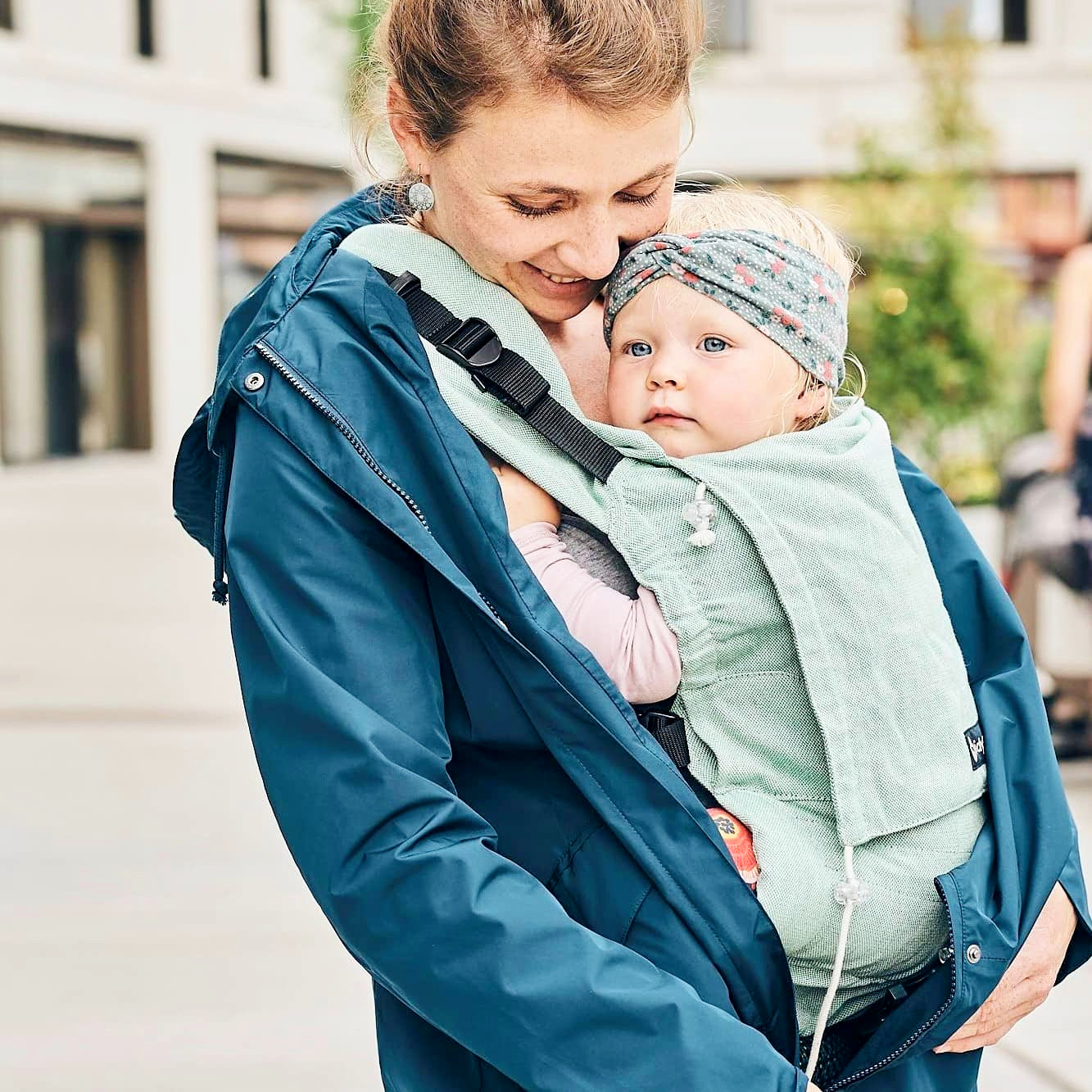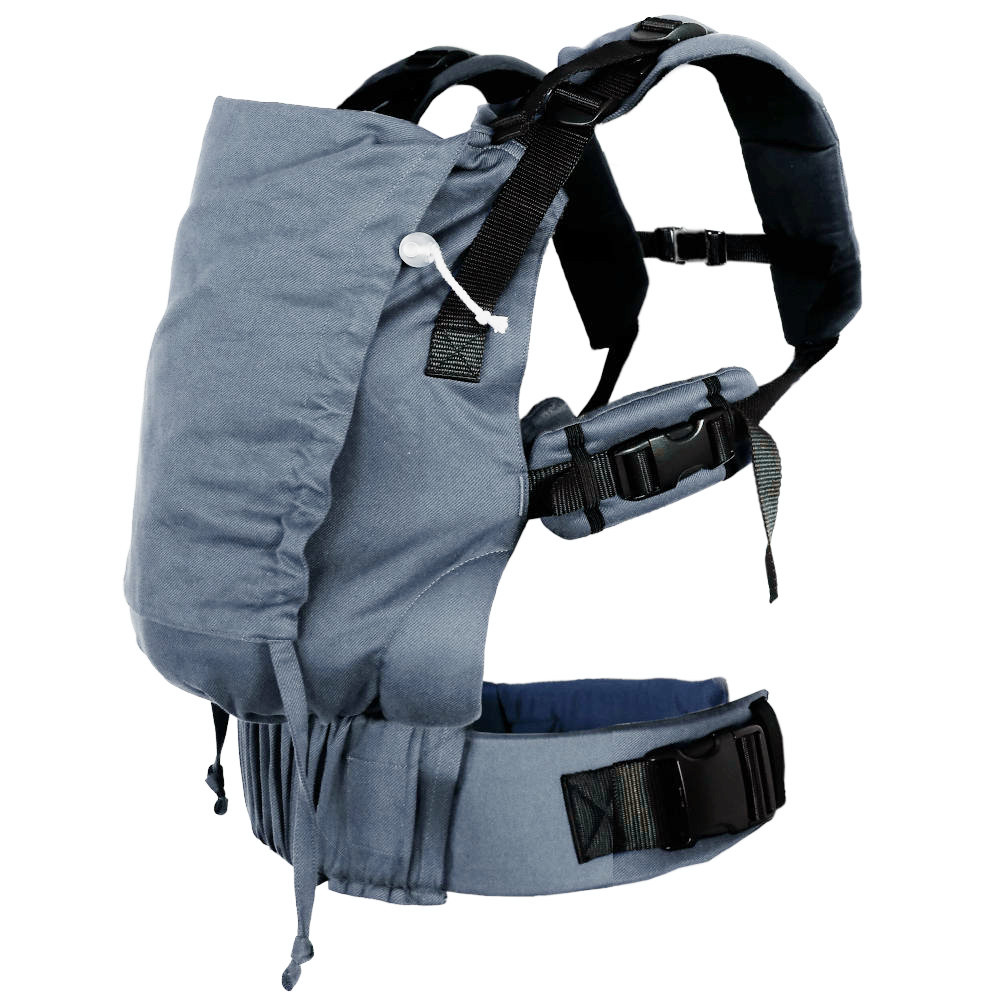Carrying baby facing forwards or facing the heart?
 Can I carry my baby facing forwards in a DIDYMOS baby carrier so that he can see more? We often hear this question, because we often see this carrying method in the media and it looks like fun. But the front carry, also called facing forward, has limitations.
Can I carry my baby facing forwards in a DIDYMOS baby carrier so that he can see more? We often hear this question, because we often see this carrying method in the media and it looks like fun. But the front carry, also called facing forward, has limitations.
For good reasons, we have designed all our baby carriers so that you can carry your baby centred on front, on your back, and on your hip. The child is always facing the person carrying him. We have made this decision quite consciously, and we explain why and how the baby can still look out into the world.
Ergonomic babywearing for baby’s back and hips
For safe and healthy babywearing, your baby should sit comfortably and in a spread-squat position. With small babies, a rounded back is also important. It is almost impossible to achieve this combination in a forward facing carry. If your baby sits in this position for a short period of time, he will not be harmed, but for longer periods of carrying, an optimal ergonomic position can only be advantageous and more comfortable, for both of you.
Comfort for the child and the person carrying the child
For the child and the person carrying the child, babywearing should not only be healthy, but also comfortable. If you are carrying the baby facing you, he will snuggle up to your body. With older children, you can easily observe that they like to wrap their legs around the person carrying them.
This also makes wearing the child comfortable, because the centre of gravity is up on your body and won’t shift. If the child's legs hang outwards and he likes to move them, he shifts - which is uncomfortable, and you need to be careful with your balance.
Your back and pelvic floor will also thank you if you don't wear in a front facing position - it's gentlest for you to wear baby on your back, especially with bigger ones.
Withdrawing from external stimuli
On front carrying, behavioural biologist Dr Evelin Kirkilionis writes in a commentary:
"In addition, with this orientation a baby is confronted with all the information from the environment. Little ones first have to learn what is important and what is unimportant, including how to block them out, so to speak. First of all, however, all the stimuli affect the child, to which it is at the mercy of in this orientation away from the body. Certainly, babies are incredibly stimulated when they are carried in this way and are extremely lively. They seem to like being able to see so much. But the absorption of the flood of information cannot be stopped at the right time because of this strong stimulus component, which small babies cannot escape on their own.
On the one hand, turning away on one's own, even if a child could do so, is not possible in principle, because the way the baby is carried does not allow this. Secondly, because a strong stimulus keeps babies captive, even if the stimulation is too much. Babies can be turned away from strong stimuli when they get tired, their head slumps to the side, their body tension decreases, then the stimulus components get out of the field of vision and the fascination is interrupted. None of this is possible with the facing away from the body carrying method."
Facing Forward - not a substitute for other carrying positions.
Therefore, facing forward carrying, when provided, is not a substitute for other positions. This is because it is intended for babies from 6 months of age and only for a short period of time, maximum 10-20 minutes, in a quiet environment. It is also very important to remember that this position is not suitable for sleeping, as the necessary head support for the child isn’t there.
Discovering the world together - with a view to the heart
Our babies become more curious in their first months and learn many things at a rapid pace. To meet the need to "be able to see more", other options are possible than the facing forward carry. Carried on the hips or on the back, the baby has a wonderful all-round view - cosy, comfortable, and safe, nothing stands in the way of discovering the world together, and turning away when it’s too much.
If your baby is facing you while being carried, as with all DIDYMOS baby carriers - whether you are carrying centred in front, on the back, or on the hip - there are almost no limits to the length of time you can carry your baby and in what environment. If your baby is tired, he can lean his head against the carrying person and take a nap safely supported.
Are you still looking for the right baby carrier and the right way to carry your baby? Contact us, no matter at what stage of your babywearing journey you find yourself. We look forward to hearing from you!

This Blog post is by Christina Riffi










